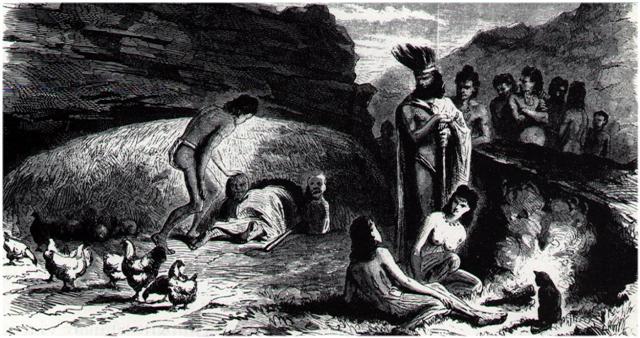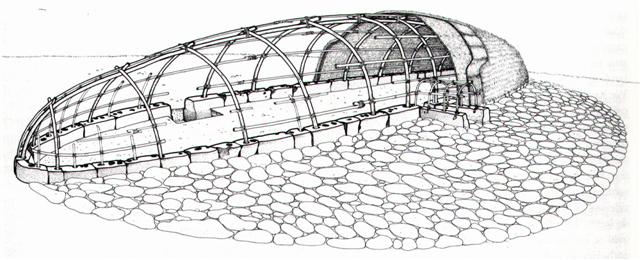|
TRANSLATIONS
The rongorongo tablets and the canoes of Easter Island were created by using driftwood (as if such had 'coagulated' somewhere far out east in the ocean). To create earth from the primordial sea the gods churned the sea, so it coagulated (to'a). I have earlier - based on other facts and ideas - concluded that a canoe (or a raft) is similar to an island in Polynesian thought. To create a canoe is to behave like the primordial gods, to assemble from small flotsam a new 'island ship'. The pora 'canoes' made from 'straw' (dried reeds) completes the puzzle:
The word pora alludes to poraa, 'day' - i.e. night according to Polynesian thought, the darkness (po) of the sun (Raá). And totora can easily be understood in a similar way, viz. as the 'coagulated' (dried out) 'grasses' of the sun:
So the 'Ark of Noah' on Easter Island could have been a great Pora. Next page:
Having come so far, next application of the mythic structure surely must be the 'upside down canoe' hare paega:
Straw is used also here. And the opening is framed by two peculiar 'strongmen' (manu-uru): ... The low entrances of houses were guarded by images of wood or of bark cloth, representing lizards or rarely crayfish. The bark cloth images were made over frames of reed, and were called manu-uru, a name given also to kites, masks, and masked people ... The opening could in the rongorongo system be equal to what I have termed 'midnight henua', as for instance in Aa1-43, and in this example Aa1-42 and Aa1-44 would then represent the manu uru pair:
Ligth of a poor sort enters into the otherwise pitchblack interior. The canoe (tao) in Aa1-45 should be close by:
In this picture there seems to be an opening also on the other side of the 'canoe'. Whatever it is it could be related to the tao glyph in Aa1-45. If an island (little piece of dry land drawn up from the bottom of the sea) is depicted as henua, then the 'moving island', a canoe (little piece of dry land 'coagulated' from planks) could be depicted as tao. The front side of a hare paega has a 'door' to let in the light and the back side (representing the dark side) has another 'door':
In front of the front side a kind of pavement (paepae) creates a flat surface (like the sea full with flotsam). It lies out in the sunshine, expressing the opposite of the dark inside. But it looks like a shadow of hare paega in the picture above. The flat horizontal surface lies out in the sun, the vertical frame represents its opposite. The canoe-like hare paega belongs in the night calendar. We can interpret this quartet of glyphs as referring to the hare paega:
To come to an end (pae) refers to the end of the day. The resemblances with pau and vae may be significant. But the end certainly is also a new beginning, to start (pae). Paepae is not only the pavement of stones but also the planks and the canoe itself. The pavement illustrates how pieces can be assemled into an integrated whole. The ancient Egyptian ship was sewn together by 12 different planks:
... It is interesting to note…that the bottom planking and backing timbers of the Cheops ship consists of twelve timbers... In antiquity the Egyptians were notorious for doing things differently from other peoples. This was certainly true for the techniques they used in shipbuilding. While many cultures built 'sewn' or 'lashed' ships with their planks held together with ligatures, only the Egyptians used transverse lashings that did not penetrate the hull. Furthermore, while the shipwrights of other nations were careful to create straight planking seams, the ancient Egyptian shipwrights intentionally 'joggled' their planking edges into jigsawlike patterns that prevented longitudinal sliding ... |





